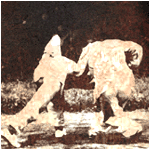|

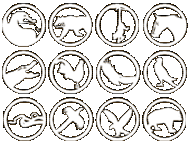
<---
| ---> |
|
The Five Element fists are expanded further through the practice of twelve animal
styles. Each of the animals contains variations of the five fists which differ
from the original. The key point here is that externally the form may vary,
but internally, the energy expressed is the same. For example, Zuan Quan (Drilling
Fist) is first taught with the left foot stepping forward in conjunction with
the left fist as it drills up and forward. Now, Zuan may be done with the opposite
foot forward, with the body turned to the side, etc. As long as the energy expressed
is that of pi, beng, zuan, pao or heng, then the external body is not limited
by form. The energy becomes the form and body mimics the mind's intent.
|
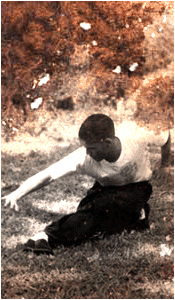
Felipe Bido crouched in Long Xing. |

The
Dragon form is one of the tougher animal forms to master in Xingyi. Both the
waist and legs are put to the test. It primarily works these muscles while focusing
on twisting the torso.
Dragon contains quick vertical leaps that land a low scissor-step crouches while
the hands split into Pi Quan. It takes a dedicated practioner diligent practice
to utilize this correctly in a real fighting situation.
|
The
crouch in Dragon Form can be very effective when used in application. It is
not just a crouch, but a forward attack coupled with a sudden drop of the entire
body's weight. The results can be devasting, shattering an opponent's kneecap
or snapping the shin bone like a twig.
|
|
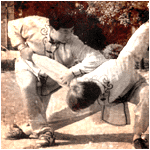 |
|
|
|

Gong Zhong Xiang in "Tiger Rotating Body Fist"
|

Tigers are known for their ferocity and strength. These traits are empahsized
in the Tiger Form which is similar to Pao Quan. The zigzag stepping pattern
is done while the arms move in a forward swatting matter, backward drawing and
upward drilling. This motion is similar to a tiger pouncing on it's prey. The
tiger form produces a great amount of energy. Pushing forward with the arms
and hitting the chest or the kidneys can be lethal.
|
Stength is emphasized in Tiger. While practicing you should concentrate your
attention on guiding your qi down to the the Dan Tian.
The
shoulders and waist are relaxed so you can thrust both palms out swiftly with
a thunderous roar.
|
|
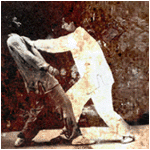 |
|
|
|
|
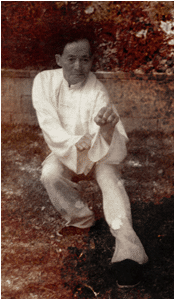
Gong Zhong Xiang in Monkey.
|

The
monkey form of Xingyi is quick and vicious. It especially
focuses on agility development in the eyes, limbs and
torso. Of the twelve animals it is the most active one.
The footwork involves skipping and hoping, crossing in
many directions. The spirt of the monkey is captured in
the dodging, stretching, rising and shifting of the form.
In the form of monkey there is a slap that may appear to be a light hit, but can
cause enormous damage. The power of the slap must not be underestimated.
|
The slap also has an aftershock that can take the eyes out with the fingers.
There are several kicks also.
|
|
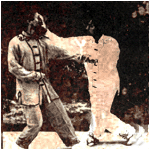 |
|
|
|
|

Felipe Bido in Ma Xing.
|

The
horse form of Xingyi represents the valor of a horse charging into battle. It
imitates the way the horse strikes with its hooves, or the way a horse is taken
by the reins to be lead. When it is practiced with the correct harmony between
the upper and lower parts of the body, and with the six harmonies correct, the
strength of the form is evident. The fists strike forward with great force, and
the body advances with considerable speed, with no hesitation.
|
Horse
is similar to the Tiger form in that both hands must rise and fall. They turn
outwards and circle inwards together.
The rear leg stomps the ground to send the front leg forward and propells the
body forward in a zig-zag motion.
|
|
 |
|
|
|
|

Felip Bido advancing in Tuo Xing.
|

Depending
on the style of Xingyi, the Water Lizard is also known as the aligator or tortise
form. The practicioner imitates the way a water lizard or an alligator advances
in the water. In this form, it is very important that the joints of the whole
body move in harmony. If done correctly, the body becomes alive and gains great
flexibility.
|
The
form strikes with a circling motion, like the Heng quan, but with the palm open,
the three last fingers curl, and the index is extended, to grab and twist the
joints and the throat, poke the eyes or strike with the palm.
|
|
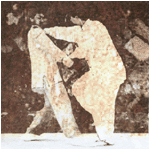 |
|
|
|
|

Felipe Bido in Ji Xing.
|

The
chicken form of Xingyi is an important one considering Ji Long Feng formulated
the art of Xingyiquan after he spied two roosters fighting.
Chicken mimics the accurancy of a chicken's pecking and it's one legged stepping.
Just as a chicken running at top speed comes to a sudden halt when it hears something
strange, you must emulate this in the form as "Golden Cock Stands on One
Leg."
| Chicken
is similar to the Snake Form in that the hands shoot quickly outwards, but sections
of the form, such as "Golden Chicken Shakes it's Feather," capture the
amazing vitality and braveness of the bird. The chicken is a good fighter. That
spirit must be harnessed in this form. |
|
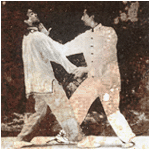 |
|
|
|
|
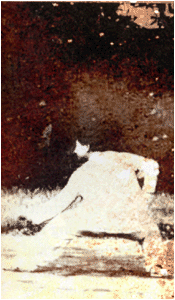
Lin Jian Hua in "Sparrow Hawk Flips Over It's Body"
|

Sparrow
Hawks are birds of prey, known for their ability to turn and flip it's body in
midair and swoop down to attack. This form captures the spirit of the flying bird.
Sections of the form such as "Sparrow Hawk Turns Over It's Body" uses
a lower version of Pi Quan in which the hands are balled tightly into fists.
|
Application-wise,
many sections of Sparrow Hawk are brutal attacks to the groin area - grabbing,
twisting and following through with a Pi Quan thrust or drilling fist.
Sparrow Hawk is important and is sometimes taught first, for it is used in many
of Xingyi's other forms such as Za Shi Chui and Ba Shi Chui.
|
|
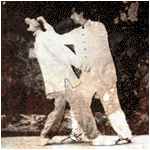 |
|
|
|
|

Gong Zhong Xiang in Yan Xing
|

Although
the Swallow is not known as a fighting bird, the form imitates it's way of flying
and taking water from the river. The bird is very light and can turn quickly without
stopping.
The Swallow form is heavy on attacks to the throat and the eyes, and the lower
parts of the body (groin and knees). It also gives the practicioner the ability
to improve his skill to evade attacks with very little movement.
|
Both
hands can be combined to move like a swallow fluttering, thus fooling the enemy,
who will not see the definitive strike. The form is special in sinking down
the body, thus gathering Qi. It uses
|
|
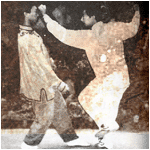 |
|
|
|
|
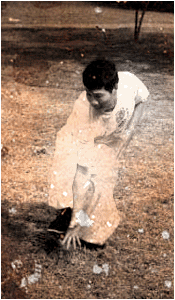
Deng Fu Xing in a transitional movement of She Xing.
|

The
snake form imitates a snake sweeping trough the grass. Both hands move down the
body, like snakes coiling and rolling in the grass. The use of the waist and low
stances is also emphasized.
The techniques of snake are very quick and concealed, with the hands moving quickly
and trapping, taking down or hitting the enemy´s body with speed, with force that
moves downward and spinning.
|
Some Xingyi systems stick out the middle knuckle (In a phoenix-eye fist manner)
at the exact time of contact with the opponent´s body. This produces a concentration
of energy in the strike that causes a great amount of internal damage if done
properly.
|
|
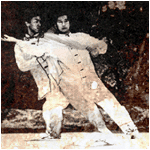 |
|
|
|
|
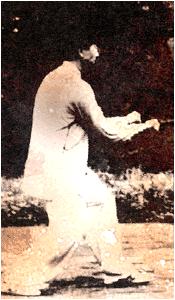
Lin Jian Hua holding the trademark double fists of the
Tai Xing.
|

The
Tai is a mythical bird, sometimes referred as to as the "phoenix." In the
form, the Xingyi practicioner imitates his way of attacking: The Tai Bird flies
and strikes its enemy with a straight blow with both wings, issuing power in a
straight/outward way. The form proves to be a great conditioner of the shoulders
and chest muscles. The arms are moved in a circular way above the head while the
body moves, and then, both arms shoot forward, and issue power outwards, separating
the fists when the body stops.
|
In
some Xingyi systems, there are two Tai Bird Forms: Tai Yin and Tai Yang. Tai
Yang is the most common, performed with the 'yang' fists (palms upward), and
outward energy. Tai Yin is executed with 'yin' fists (palms downward), and crossing
both fists in front of the body.
|
|
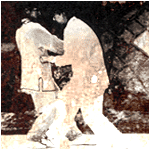 |
|
|
|
Application
pics from the book "Form and Will Boxing" by Lin Jianhua.
<---
| --->
|
|
|






















